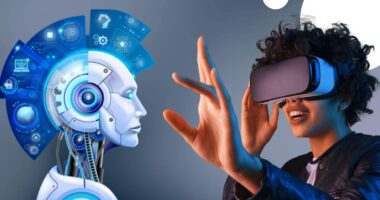Biography of Leo Tolstoy: Russian writer Leo Tolstoy, full name Lev Nikolayevich Tolstoy was born on 9 September 1828. He is regarded as one of the greatest writers of all time. Tolstoy received nominations for the Nobel Peace Prize in 1901, 1902, and 1909. One of the biggest controversies regarding Tolstoy is the fact that he never won a Nobel Prize. He was also nominated for the Nobel Peace Prize for Literature from 1902 to 1906.
His best works are often regarded as the pinnacles of realist fiction – War and Peace (1869) and Anna Karenina (1878). He also wrote novellas, plays, and philosophical essays. Some of his popular works are Family Happiness (1859), The Death of Ivan Ilyich (1886), Hadji Murad (1912), and more. During the 1870s, he faced a profound moral crisis which led to his spiritual awakening as outlined in A Confession (1882), his popular non-fiction work. The Kingdom of God is Within You (1894) based on his ideas of nonviolent resistance had a huge impact on pivotal figures like Martin Luther King Jr., and Mahatma Gandhi. In Resurrection (1899), Tolstoy advocated Georgism, the economic philosophy of Henry George.
Personal Life
Leo Tolstoy was born at Yasnaya Polyana. He was the fourth of five children of Princess Mariya Tolstaya and Count Nikolai Ilyich Tolstoy. His mother died when he was two years old and his father died when he was just nine. He and his siblings were brought up by their relatives. In 1844, Tolstoy began studying oriental languages and law at Kazan University. His teachers described Tolstoy as “both unable and unwilling to learn.” He left his university studies in the middle and went back to Yasnaya Polyana and spent a lot of time in Saint Petersburg, Moscow, and Tula leading a luxurious life.

In 1851 after heavy gambling debts, he went to the Caucasus with his brother and joined the army. He served as a young officer during the Crimean War. During the war, Tolstoy was recognized for his bravery and was promoted to the post of lieutenant. Tolstoy was appalled by the deaths involved in warfare and he left the army after the Crimean war. The war experience and two trips to Europe converted Leo Tolstoy from a privileged society author to a spiritual anarchist. He gained a lot of spiritual and philosophical knowledge, met prolific writers such as Victor Hugo, and came in contact with political figures like Mahatma Gandhi.
Tolstoy returned to Yasnaya Polyana with great enthusiasm and founded 13 schools for the children of Russian peasants. He did it for the peasants who had just been emancipated from serfdom in 1861. Though due to the Tsarist secret police, his educational experiments were short-lived, they can still be claimed to be the first example of a coherent theory of democratic education.
In 1860 his brother Nikolay died which led him to a desire of getting married. On 23 September 1862, he married Sophia Andreevna Behrs. Sophia was the daughter of a court physician and sixteen years younger than Tolstoy. Tolstoy and Sophia had 13 children and eight of them survived childhood. Even though their marriage began as the happiest but in later life A.N. Wilson described their married life as one of the unhappiest in literary history. His relationship deteriorated with his wife as his beliefs became more and more radical.
Works of Leo Tolstoy
Leo Tolstoy’s earliest works are his autobiographical novels – Childhood, Boyhood, and Youth (1852-1856). During the Crimean War, Tolstoy served as a second lieutenant in an artillery regiment; this was recounted in his Sevastopol Sketches. This experience helped stir his subsequent pacifism and gave him the ideas and materials for realistic depiction in his later works. According to Richard Pevear, who translated several works of Tolstoy, “His works are full of provocation and irony, and written with broad and elaborately developed rhetorical devices.”
War and Peace are considered one of the greatest works of all time. The work includes 580 characters with many historical and fictional characters. Tolstoy never considered War and Peace to be a novel as he was a novelist of the realist school. He considered a novel as a framework for the examination of political and social issues in 19th-century century life. Tolstoy considered the novel as an epic in prose. According to him, Anna Karenina was his first true novel.

After Anna Karenina, he concentrated on Christian themes in works such as What is to be Done? and The Death of Ivan Ilyich develop a radical anarcho-pacifist Christian philosophy. In 1901 this led to his excommunication from the Russian Orthodox Church. For all the praise War and Peace and Anna Karenina received, he rejected these two works as something not as true of reality. In Resurrection, he exposes the hypocrisy of an institutionalized church and the injustice of man-made laws.
He also tried to write poetry with soldier songs during the period of his military service. And fairy tales, in verse such as Oaf and Volga-bogatyr stylized as national folk songs. They were written between 1871 and 1874 for his collection of short stories in four volumes titled Russian Book for Reading. The collection includes a total of 629 stories in various genres. Tolstoy famously said, “Writing poetry is like ploughing and dancing at the same time.”
Last Days
Leo Tolstoy died at the age of 82, on 20 November 1910. After a day’s train journey, he died of pneumonia at Astapovo railway station. In his last days, Tolstoy wrote and spoke about dying. His family took care of him before his death. During this time he left his house secretly one winter night, renouncing his aristocratic lifestyle to escape his wife’s tirades. His wife spoke out against several of Tolstoy’s teachings and developed envy of his attention to Tolstoyan disciples. According to some sources, he spent his last hours preaching non-violence, love, and Georgism to his fellow passengers.
Also Read: Biography of Simone de Beauvoir



